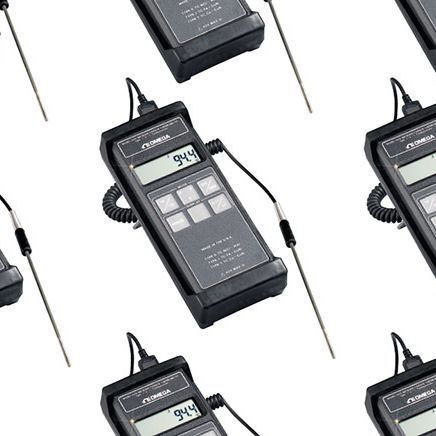Level measurement is the process of determining the position of material – either liquid or solid – within a container, tank, silo, or other vessel. It is crucial in many applications for maintaining process efficiency, ensuring safety, and supporting inventory management, and is relied on in industries ranging from water treatment and food processing to oil and gas and chemical manufacturing.
Integral to this process are level measurement sensors, of which there are two main categories of technologies: point level measurement and continuous level measurement.
Types of Level Measurement
Point Level Measurement
🔍 Key Applications
- Overflow Protection – Alerting when a tank is full
- Pump Control – Turning pumps on/off at low/high levels
- Safety & Compliance – Ensuring hazardous materials stay within safe levels
📏 Common Types
Float Switches
- How They Work: A float rises or falls with the material, mechanically triggering a switch
- Best For: Clean, non-viscous liquids
- Pros: Simple, reliable, low-cost
- Cons: Not great for sticky, corrosive, or slurry media
Conductive Sensors
- How They Work: Use electrodes to detect conductive liquids
- Best For: Water-based liquids
- Pros: Inexpensive & simple
- Cons: Not suitable for non-conductive materials (like oils)
Vibrating Sensors
- How They Work: A vibrating fork changes frequency or stops vibrating when covered by material.
- Best For: Powders and fine solids
- Pros: Accurate. No calibration needed
- Cons: Not ideal for very light or sticky materials
Continuous Level Measurement
Continuous level measurement is a method used to monitor the exact level of a material—such as a liquid, slurry, or bulk solid—within a tank, silo, or vessel over the entire height of the container. Instead of detecting just one point, this type of measurement provides real-time, uninterrupted data on how much material is present, often expressed as a percentage, volume, or height.
🔍 Key Applications
- Inventory Management – Monitoring tank levels to optimize storage and refilling schedules.
- Process Control – Ensuring consistent material flow in manufacturing or mixing processes.
- Safety Systems – Preventing overfill or depletion of critical materials.
- Batching & Dosing – Accurately measuring amounts for repeatable production.
📏 Common Types
Ultrasonic Level Sensors
- How They Work: Emit sound waves that reflect off the material surface; the time it takes to return determines level.
- Best For: Liquids and solids in open or closed tanks.
- Pros: Non-contact, low maintenance.
- Cons: Affected by foam, dust, or turbulence.
Radar Sensors
- How They Work: Send high-frequency radar signals that reflect off the material; the return time indicates level.
- Best For: Harsh environments, steam, or high-pressure tanks.
- Pros: Extremely accurate, works in difficult conditions.
- Cons: More expensive than other technologies.
Hydrostatic Sensors
- How They Work: Measure the pressure exerted by the material at the bottom of the tank to calculate level.
- Best For: Liquid applications with known densities.
- Pros: Simple, cost-effective.
- Cons: Requires knowledge of material density and can be affected by temperature.
Choosing the Right Level Measurement Technology
When selecting a level measurement solution, it's essential to understand the difference between contact and non-contact sensors. Each has its advantages depending on the material type, environmental factors, and maintenance needs.
Contact Level Sensors
Contact sensors physically touch the material to measure its level. They are perfect for clean, stable liquids or solids that don't cause significant wear on the sensor. Common technologies include float switches, conductive probes, and hydrostatic pressure sensors.
Pros- Cost-Effective: Generally lower initial investment.
- High-Accuracy:


